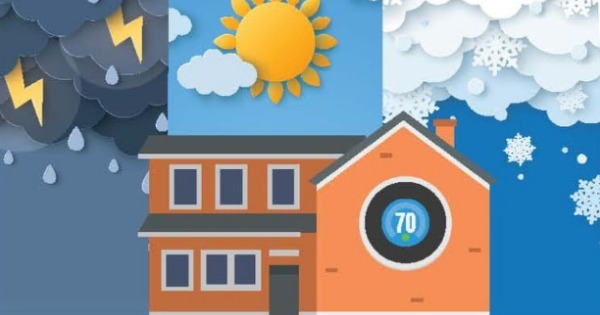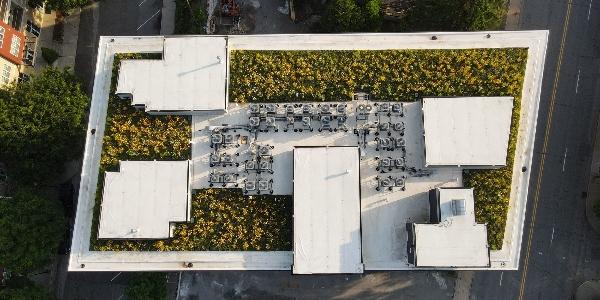Biosolar roofing in action
October 6, 2025 at 12:00 p.m.By Emma Peterson.
Learn how plants can make rooftop solar systems more effective.
As the built environment continues to grow and develop, we have seen a rise in issues such as the Urban Heat Island effect, drops in biodiversity and overexerted energy grids. In response, there has been a rise of interest in innovative products and systems that mitigate these issues. One that has shown to be very effective is the introduction of biosolar roofing.
Biosolar roofing is the combination of solar panels and green roofing to create a symbiotic roofing system that not only promotes biodiversity and energy independence but also reduces urban heat. How does this work?
The entire goal of solar panels is to absorb solar energy. But a side effect is that solar panels often heat up to the point of diminishing returns (beyond 25°C/77°F their efficiencies greatly decrease). Beyond biodiversity, one of the biggest benefits of green roofing is that they reduce the ambient temperature as the vegetation releases water vapor. When combined, researchers found, “By reducing average maximum temperatures by about 8°C (46°F), [green roofing] increased solar generation by as much as 107% during peak periods.”
And these systems are already getting incorporated into the real world! A great example of this is the Parsloes Park in the London, England Borough of Barking and Dagenham. When the sports center was getting built, the contractor had to meet certain stipulated “minimums of area assigned as a green roof, and also PV output.”
They met this requirement by building a biosolar system that featured Axter HydroSoil Sedum alongside solar units. Greenscape Magazine reports, “[By installing green roofing] in areas where solar isn’t present, which allows a greater area to be covered in substrate and flora, while also delivering the required number of solar units. [The contractor also used a] ballast approach which has the added benefit of anchoring the frame-mounted panels securely without any penetrations that could potentially compromise the underlying waterproofing.”
Overall, most rooftops are underused space, in fact about a quarter of the available space in a city is made up from roofs! Biosolar roofs are a great way to turn these spaces into energy-producing, cooling habitats.
Original image source: Elevate
Stay up to date with the latest industry news when you sign up for the Coffee Shop eNews.

About Emma
Emma Peterson is a writer at The Coffee Shops and AskARoofer™. Raised in the dreary and fantastical Pacific Northwest, she graduated in 2024 from Pacific University in Oregon with a degree in creative writing and minors in graphic design and Chinese language. Between overthinking everything a little bit, including this bio, she enjoys watching movies with friends, attending concerts and trying to cook new recipes.























Comments
Leave a Reply
Have an account? Login to leave a comment!
Sign In